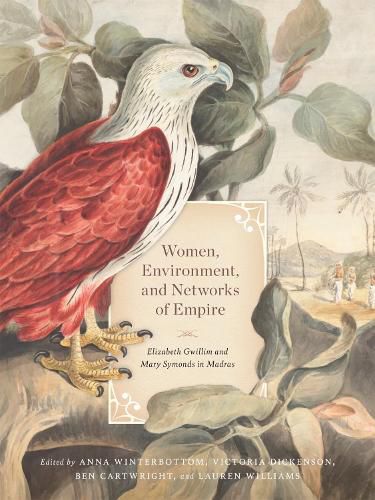Readings Newsletter
Become a Readings Member to make your shopping experience even easier.
Sign in or sign up for free!
You’re not far away from qualifying for FREE standard shipping within Australia
You’ve qualified for FREE standard shipping within Australia
The cart is loading…






Elizabeth Gwillim (1763-1807) and her sister Mary Symonds (1772-1854) produced over two hundred watercolours depicting birds, fish, flowers, people, and landscapes around Madras (now Chennai). The sisters' detailed letters fill four large volumes in the British Library; their artwork is in the Blacker Wood Natural History Collection of McGill University Library in Canada and in the South Asia Collection in Britain. The first book about their work and lives, Women, Environment, and Networks of Empire asks what these materials reveal about nature, society, and environment in early nineteenth-century South India.
Gwillim and Symonds left for India in 1801, following the appointment of Elizabeth's husband, Henry Gwillim, to the Supreme Court of Madras. Their paintings document, on one hand, the rapidly expanding colonial city of Madras and its population and, on the other, the natural environment and wildlife of the city. Gwillim's paintings of birds are remarkable for their detail, naturalism, and accuracy. In their studies of natural history, Gwillim and Symonds relied on the expertise of Indian bird-catchers, fishermen, physicians, artists, and translators, contributing to a unique intersection of European and Asian natural knowledge. The sisters' extensive correspondence demonstrates how women shaped networks of trade and scholarship through exchanges of plants, books, textiles, and foods.
In Women, Environment, and Networks of Empire an interdisciplinary group of scholars use the paintings and writings of Elizabeth Gwillim and Mary Symonds to explore natural history, the changing environment, colonialism, and women's lives at the turn of the nineteenth century.
$9.00 standard shipping within Australia
FREE standard shipping within Australia for orders over $100.00
Express & International shipping calculated at checkout
Elizabeth Gwillim (1763-1807) and her sister Mary Symonds (1772-1854) produced over two hundred watercolours depicting birds, fish, flowers, people, and landscapes around Madras (now Chennai). The sisters' detailed letters fill four large volumes in the British Library; their artwork is in the Blacker Wood Natural History Collection of McGill University Library in Canada and in the South Asia Collection in Britain. The first book about their work and lives, Women, Environment, and Networks of Empire asks what these materials reveal about nature, society, and environment in early nineteenth-century South India.
Gwillim and Symonds left for India in 1801, following the appointment of Elizabeth's husband, Henry Gwillim, to the Supreme Court of Madras. Their paintings document, on one hand, the rapidly expanding colonial city of Madras and its population and, on the other, the natural environment and wildlife of the city. Gwillim's paintings of birds are remarkable for their detail, naturalism, and accuracy. In their studies of natural history, Gwillim and Symonds relied on the expertise of Indian bird-catchers, fishermen, physicians, artists, and translators, contributing to a unique intersection of European and Asian natural knowledge. The sisters' extensive correspondence demonstrates how women shaped networks of trade and scholarship through exchanges of plants, books, textiles, and foods.
In Women, Environment, and Networks of Empire an interdisciplinary group of scholars use the paintings and writings of Elizabeth Gwillim and Mary Symonds to explore natural history, the changing environment, colonialism, and women's lives at the turn of the nineteenth century.